Comments / Questions (73)
![]() Ylva wrote:
Ylva wrote:
Jag tittar på beskrivningen och A5 och A6, borde de inte vara lika, men en med flötsticka framför och en bakom. A6 sätter 4 maskor på flätstickan, men hämtar bara upp 2. Eller har jag missförstått? Tacksam för hjälp, Ylva
27.02.2025 - 22:31DROPS Design answered:
Hej Ylva, fletterne skal stemme... har du set videoen med fletterne, som vi har lavet til opskriften?
06.03.2025 - 11:56
![]() Martina Jordan wrote:
Martina Jordan wrote:
Hallo! Es steht, dass man sobald die Arbeit 32 cm misst mit den Zunahmen aufhört. Sind die 32 cm inklusive der 12 vom Kragen gerechnet? Vielen lieben Dank! TOLLE ANLEITUNG ÜBRIGENS 👍
21.02.2025 - 11:13DROPS Design answered:
Liebe Frau Jordan, in 4. Größe messen Sie diese 32 cm nach dem Kragen (siehe auch Maßskizze). Viel Spaß beim Stricken!
21.02.2025 - 14:10
![]() Marion wrote:
Marion wrote:
Ich möchte mir gern diesen Pullover stricken, vermisse aber die Maßskizze . Mit freundlichem Gruß Marion
18.02.2025 - 10:55DROPS Design answered:
Liebe Marion, Maßskizzse finden Sie ganz unten, nach den Diagrammen. Hier lesen Sie mehr über Maßskizze. Viel Spaß beim Stricken!
18.02.2025 - 17:15
![]() Margaux wrote:
Margaux wrote:
J'ai compris mon erreur après avoir méticuleusement relu les diagramme. Le fait que les explications des diagrammes A1 et A2 ne prennent pas en compte les 2 mailles envers situées au début et à la fin des torsades n'est pas très intuitif et c'est ça qui m'a perdu, d'où le fait qu'il me manquait des mailles pour arriver au marqueur. Désolé encore !
17.02.2025 - 21:36
![]() Margaux wrote:
Margaux wrote:
Bonjour, j'essaie de faire ce chouette modèle mais il y a quelque chose que je ne saisis pas. Pour la taille 1, après mes 12cm de cols, on me dit de tricoter 5m en côtes (après le marqueur du milieu dos) puis faire A1 et tricoter 2m (le marqueur se trouvant entre ces 2m) or ceci étant fait, après avoir fait A1 il me reste encore 5m pour arriver à mon marqueur, donc si je tricote 2m je ne suis pas encore au marqueur . Qu'ai je raté ?
17.02.2025 - 20:57DROPS Design answered:
Bonjour Margaux, vous avez 16 mailles entre le milieu dos et le 1er fil marqueur soit; 5 m pour le dos, puis 10 mailles de A.1 et 1 maille endroit avant le fil marqueur soit: 5 +10+1=16. Bon tricot!
18.02.2025 - 09:46
![]() Marián Cabréjas wrote:
Marián Cabréjas wrote:
Country flag Marián Cabréjas skrev: Hej, Efter det att jag ökat och flätat A3-A4 första gången, skall man göra samma i 5 gånger (M), men…hur många maskor mellan flätorna? ( första gången är det 13, 18, 26, 18,13) ??
06.02.2025 - 19:17DROPS Design answered:
Hej, du gør det samme sted i forhold til mærketråden hver gang, og du får 2 nye masker på forstykket, 2 nye masker på ærmerne og 2 nye masker på rygstykket for hver gang du har taget de 8 masker ud :)
18.02.2025 - 09:31
![]() Marián Cabréjas wrote:
Marián Cabréjas wrote:
Hej, Efter det att jag ökat och flätat A3-A4 första gången, skall man göra samma i 5 gånger (M), men…hur många maskor mellan flätorna? ( första gången är det 13, 18, 26, 18,13) ??
02.02.2025 - 18:45
![]() Erika wrote:
Erika wrote:
Hallo, Ik zit aan het deeltje waar je van 336 steken naar 368 steken moet gaan. Ik moet 2 keer meerderen op de voor en achterpanden, in totaal goed voor 32 steken. Ik vraag me af of dit dan nog met kabels moet? En zo ja, welke kabels? Alvast bedankt.
28.01.2025 - 18:09DROPS Design answered:
Dag Erika,
Ja, je breit daar inderdaad de kabels zoals je eerder ook deed. Dit staat ook in de beschrijving van dat deel.
19.02.2025 - 10:03
![]() Rossana wrote:
Rossana wrote:
Buongiorno. Quest' modello è molto bello .È possibile avere le istruzioni per eseguirlo con i ferri dritti? Ho difficoltà ad usare i ferri circolari. Grazie
26.01.2025 - 22:22DROPS Design answered:
Buonasera Rossana, questo modello è stato progettato per essere lavorato in tondo: se preferisce lavorarlo in piano può riadattare il modello e aggiungere una maglia per lato per la cucitura. Buon lavoro!
29.01.2025 - 23:04
![]() Rossana wrote:
Rossana wrote:
Buongiorno. Quest' modello è molto bello .È possibile avere le istruzioni per eseguirlo con i ferri dritti? Ho difficoltà ad usare i ferri circolari. Grazie
26.01.2025 - 22:20DROPS Design answered:
Buonasera Rossana, questo modello è stato progettato per essere lavorato in tondo: se preferisce lavorarlo in piano può riadattare il modello e aggiungere una maglia per lato per la cucitura. Buon lavoro!
29.01.2025 - 23:03
White Heron#whiteheronsweater |
||||||||||||||||||||||
 |
 |
|||||||||||||||||||||
Knitted jumper in 1 strand DROPS Alpaca and 2 strands DROPS Kid-Silk. The piece is worked top down with cables, raglan and rib. Sizes S - XXXL.
DROPS 254-7 |
||||||||||||||||||||||
|
------------------------------------------------------- EXPLANATIONS FOR THE PATTERN: ------------------------------------------------------- PATTERN: See diagrams A.1 to A.6. DECREASE TIP (mid-under sleeve): Decrease alternately before and after the marker-thread. Decrease before marker-thread: Work until there are 6 stitches left before the marker-thread, slip 1 stitch, knit 4 together, pass the slipped stitch over = 4 decreased stitches. Decrease after marker-thread: Purl 1, knit 5 together = 4 decreased stitches. ------------------------------------------------------- START THE PIECE HERE: ------------------------------------------------------- JUMPER – SHORT OVERVIEW OF THE PIECE: The pattern uses both long and short needles; start with the length which fits the number of stitches and change when necessary. The neck and yoke are worked in the round with circular needle, top down and from mid back . When the yoke is finished, it is divided for the body and sleeves and the body continued in the round, while the sleeves wait. The sleeves are worked top down, in the round. NECK: Cast on 112-112-112-120-120-120 stitches with circular needle size 4.5 mm, 1 strand DROPS Alpaca and 2 strands DROPS Kid-Silk (= 3 strands). Knit 1 round then work rib as follows: Sizes S-M-L: Knit 1, * purl 2, knit 2 *, work from *-* until there are 3 stitches left, purl 2, knit 1. Sizes XL-XXL-XXXL: Purl 1, * knit 2, purl 2 *, work from *-* until there are 3 stitches left, knit 2, purl 1. Work this rib for 12 cm. Insert 4 marker-threads, without working the stitches, as follows. The threads are used when increasing for raglan and each thread is inserted between 2 stitches. Count 16-16-16-18-18-18 stitches (half back piece) insert 1 marker-thread, count 24 stitches (sleeve), insert 1 marker-thread, count 32-32-32-36-36-36 stitches (front piece), insert 1 marker-thread, count 24 stitches (sleeve), insert 1 marker-thread, there are 16-16-16-18-18-18 stitches left after the last marker-thread (half back piece). The beginning of the round is mid-back. Insert 1 marker after the first 56-56-56-60-60-60 stitches (mid-front), the piece is measured from here. Now work rib, increase at each marker-thread and work cables in A.1 and A.2 as follows: Work 5-5-5-7-7-7 ribbed stitches, A.1, knit 2 (marker-thread sits between these 2 stitches) A.2, knit 2, A.1, knit 2 (marker-thread sits between these 2 stitches) A.2, 10-10-10-14-14-14 ribbed stitches, A.1, knit 2 (marker-thread sits between these 2 stitches) A.2, knit 2, A.1, knit 2 (marker-thread sits between these 2 stitches) A.2, 5-5-5-7-7-7 ribbed stitches. After this round you have increased 64 stitches - 8 increased stitches in each cable (on each side of each marker-thread) = 176-176-176-184-184-184 stitches. Work 6-6-6-5-5-5 rounds of rib as before, working the new stitches into the rib. Work 13-13-13-15-15-15 ribbed stitches, A.3, knit 2 (marker-thread sits between these 2 stitches) A.4, 18 ribbed stitches, A.3, knit 2 (marker-thread sits between these 2 stitches) A.4, 26-26-26-30-30-30 ribbed stitches, A.3, knit 2 (marker-thread sits between these 2 stitches), A.4, 18 ribbed stitches, A.3, knit 2 (marker-thread sits between these 2 stitches) A.4, 13-13-13-15-15-15 ribbed stitches. After this round you have increased 32 stitches - 4 increased stitches in each cable (on each side of the marker-threads) = 208-208-208-216-216-216 stitches. Work 6-6-6-5-5-5 rounds of rib as before, working the new stitches into the rib. Continue increasing according to A.3 and A.4, until you have cabled a total of 5-5-6-7-7-7 times (with 6-6-6-5-5-5 rounds of rib between each increase). There are 304-304-336-376-376-376 stitches. Work 6-6-6-5-5-5 rounds of rib as before, working the new stitches into the rib. Work 29-29-33-39-39-39 ribbed stitches as before, A.3, knit 2 (marker-thread sits between these 2 stitches) A.5, 50-50-58-66-66-66 ribbed stitches, A.6, knit 2 (marker-thread sits between these 2 stitches) A.4, 58-58-66-78-78-78 ribbed stitches, A.3, knit 2 (marker-thread sits between these 2 stitches) A.5, 50-50-58-66-66-66 ribbed stitches, A.6, knit 2 (marker-thread sits between these 2 stitches) A.4, 29-29-33-39-39-39 ribbed stitches. After this round you have increased 16 stitches - 4 increased stitches in each cable on the front and back pieces. The increases on the sleeves are finished and the cables have been worked on the sleeves without increases = 320-320-352-392-392-392 stitches. Work 6-6-6-5-5-5 rounds of rib as before, working the new stitches into the rib. Work 33-33-37-43-43-43 ribbed stitches as before, A.3, knit 2 (marker-thread sits between these 2 stitches) A.5, 50-50-58-66-66-66 ribbed stitches, A.6, knit 2 (marker-thread sits between these 2 stitches) A.4, 66-66-74-86-86-86 ribbed stitches, A.3, knit 2 (marker-thread sits between these 2 stitches) A.5, 50-50-58-66-66-66 ribbed stitches, A.6, knit 2 (marker-thread sits between these 2 stitches) A.4, 33-33-37-43-43-43 ribbed stitches. After this round you have increased 16 stitches - 4 increased stitches in each cable on the front and back pieces, none on the sleeves = 336-336-368-408-408-408 stitches. Work 6-6-6-5-5-5 rounds of rib as before, then increase 1-2-3-3-4-5 more times on the front and back pieces; no increases on the sleeves = 352-368-416-456-472-488 stitches. You have cabled a total of 8-9-11-12-13-14 times. Continue working rib and cables, without further increases until the yoke measures 24-27-32-32-34-36 cm, finishing after at least 6-6-6-5-5-5 rounds of rib after the last cable-round. Now divide for the body and sleeves as follows: Work the first 52-56-64-70-74-78 stitches (half back piece), place the next 72-72-80-88-88-88 stitches on a thread for the sleeve, cast on 20-24-20-20-24-28 stitches (in side under sleeve), work 104-112-128-140-148-156 stitches (front piece), place the next 72-72-80-88-88-88 stitches on a thread for the sleeve, cast on 20-24-20-20-24-28 stitches (in side under sleeve), work the remaining 52-56-64-70-74-78 stitches (half back piece). BODY: = 248-272-296-320-344-368 stitches. Work rib in the round over all stitches, until the piece measures 50-52-54-56-58-60 cm from the marker mid-front. Cast off. The jumper measures approx. 56-60-62-64-66-68 cm from the shoulder. SLEEVES: Place the 72-72-80-88-88-88 sleeve-stitches from the thread on one side of the piece on circular needle size 4.5 mm and knit up 1 stitch in each of the 20-24-20-20-24-28 stitches cast on under the sleeve = 92-96-100-108-112-116 stitches. Work rib in the round for 4 cm. Now decrease 4 stitches before the marker-thread. Repeat this decrease, alternately before and after the marker-thread every 8-8-6-6-6-6 cm a total of 2-2-4-4-4-4 times - read DECREASE TIP = 84-88-84-92-96-100 stitches. Continue working until the sleeve measures 42-40-36-36-35-34 cm. Cast off. |
||||||||||||||||||||||
Diagram explanations |
||||||||||||||||||||||
|
||||||||||||||||||||||
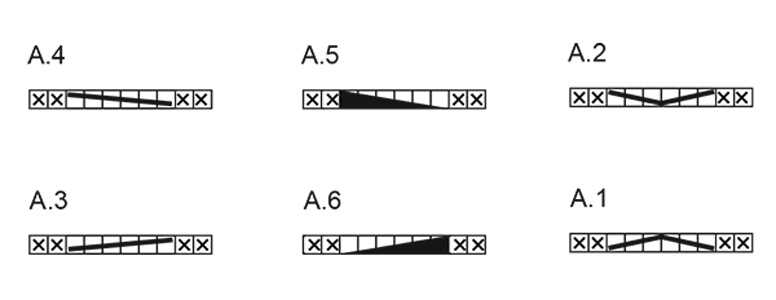 |
||||||||||||||||||||||
 |
||||||||||||||||||||||
Have you finished this pattern?Tag your pictures with #dropspattern #whiteheronsweater or submit them to the #dropsfan gallery. Do you need help with this pattern?You'll find 26 tutorial videos, a Comments/Questions area and more by visiting the pattern on garnstudio.com. © 1982-2025 DROPS Design A/S. We reserve all rights. This document, including all its sub-sections, has copyrights. Read more about what you can do with our patterns at the bottom of each pattern on our site. |
||||||||||||||||||||||







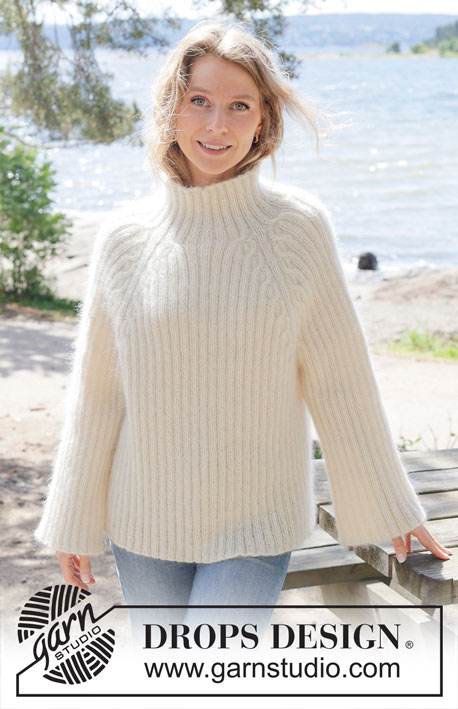
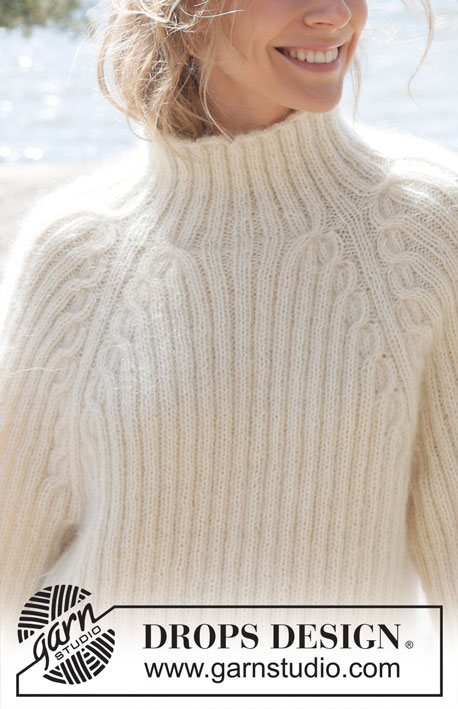
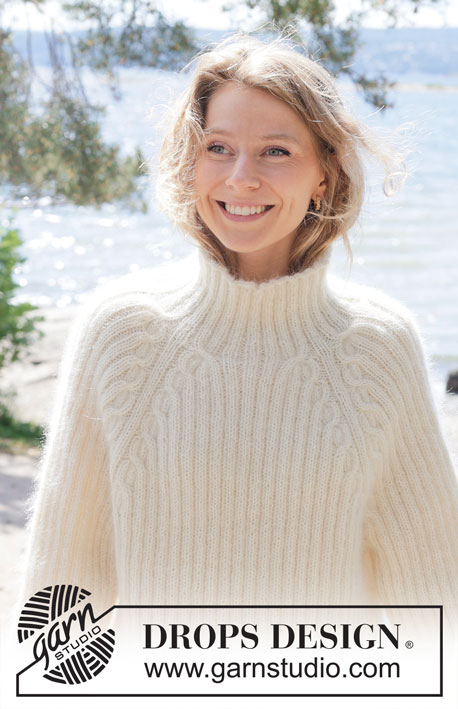

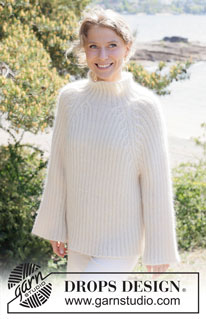
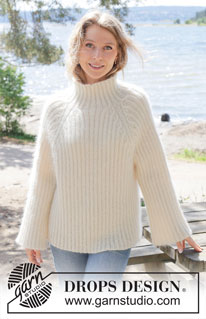
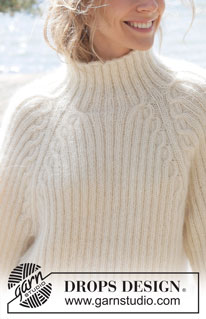
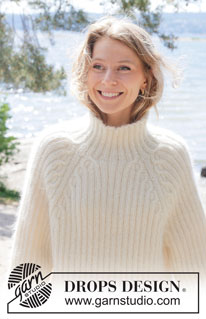

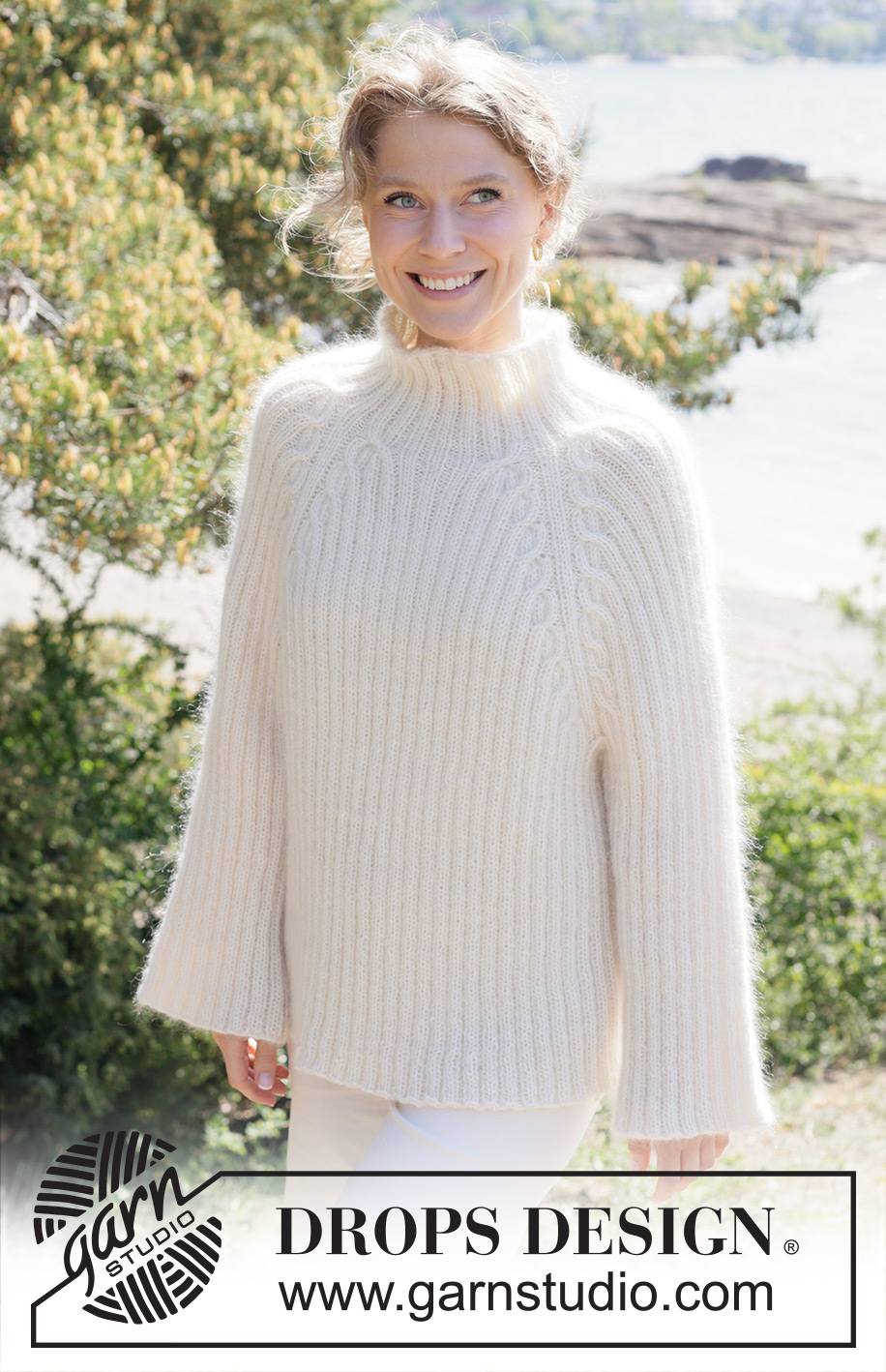
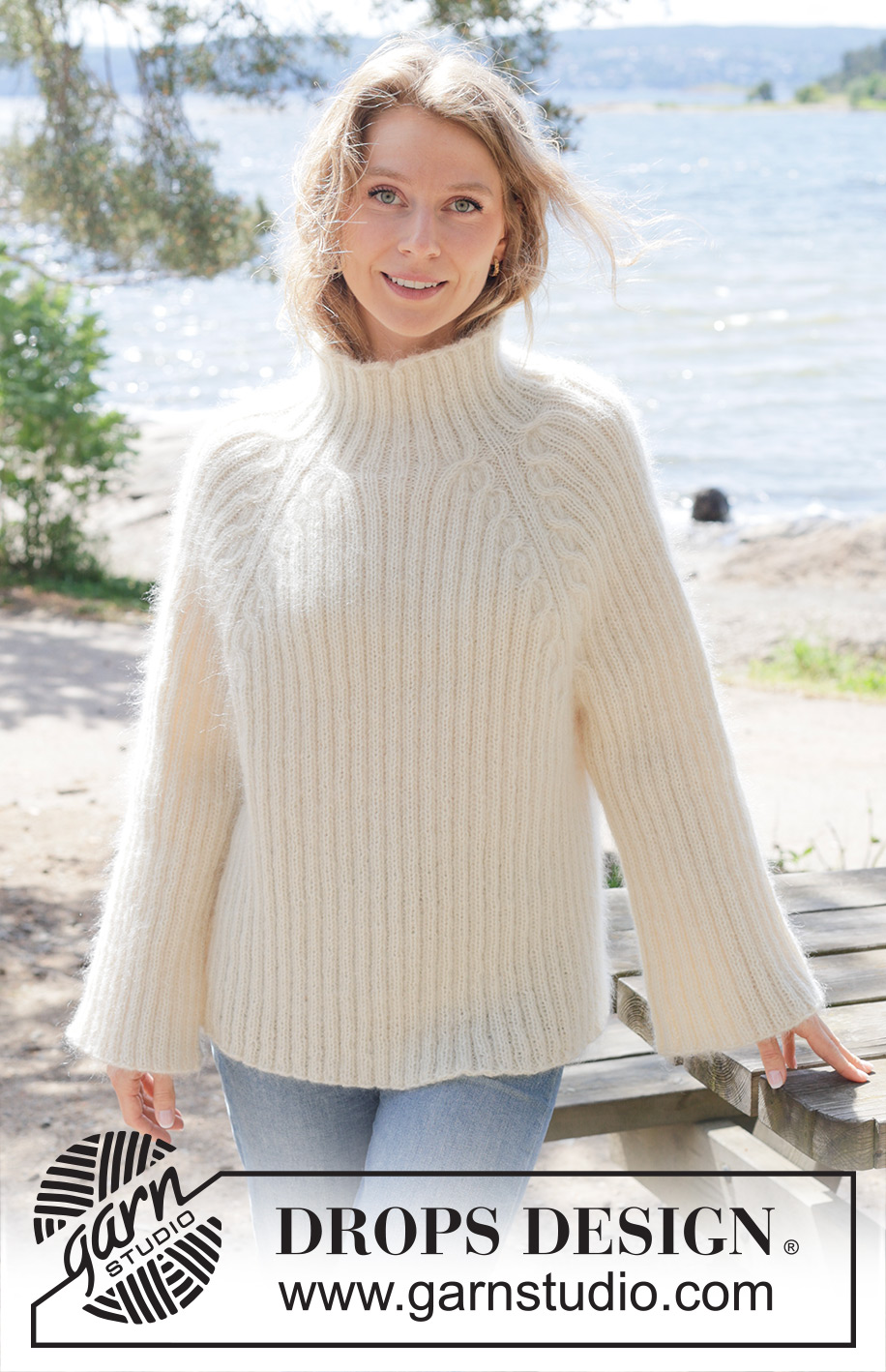
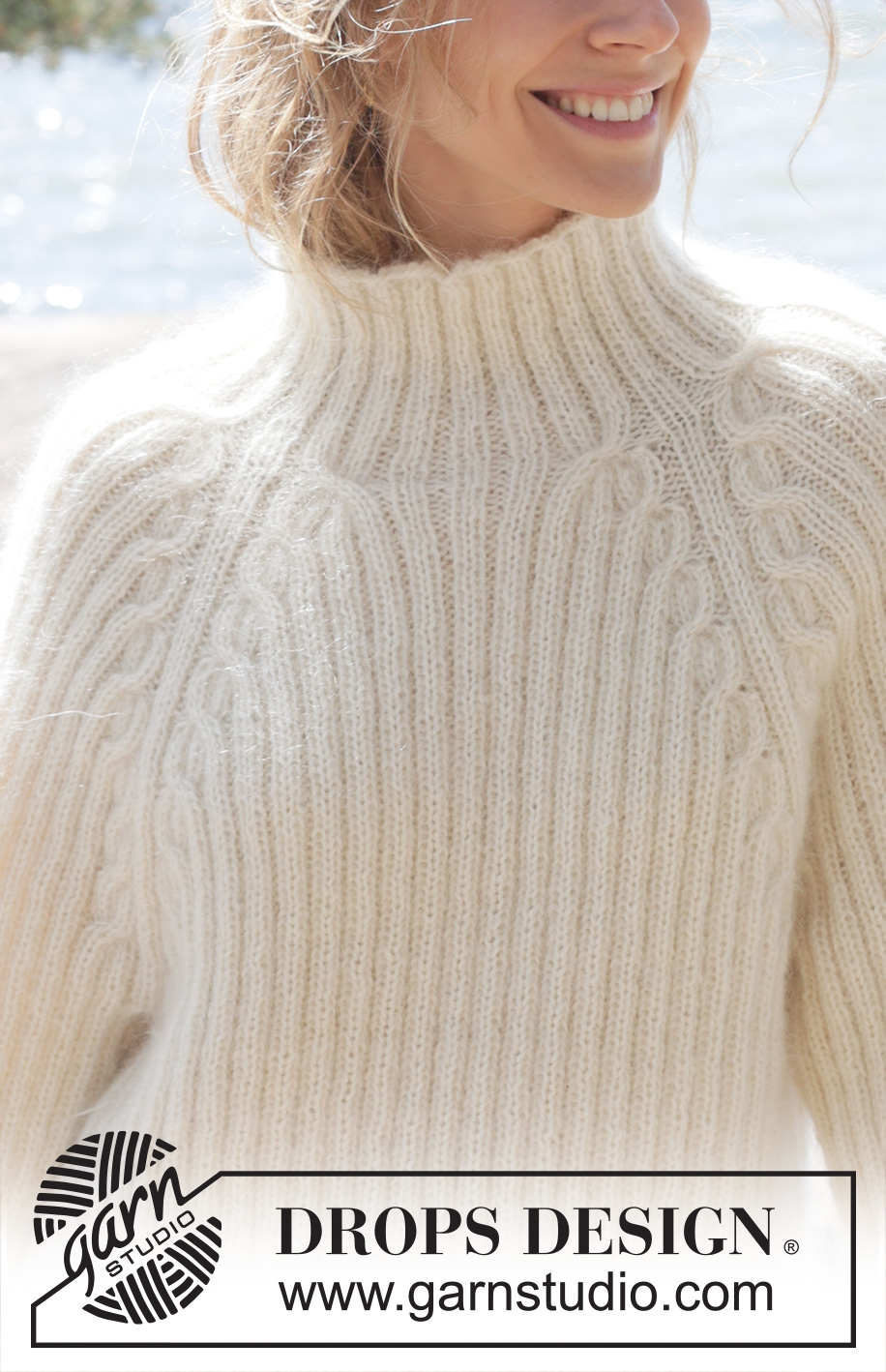
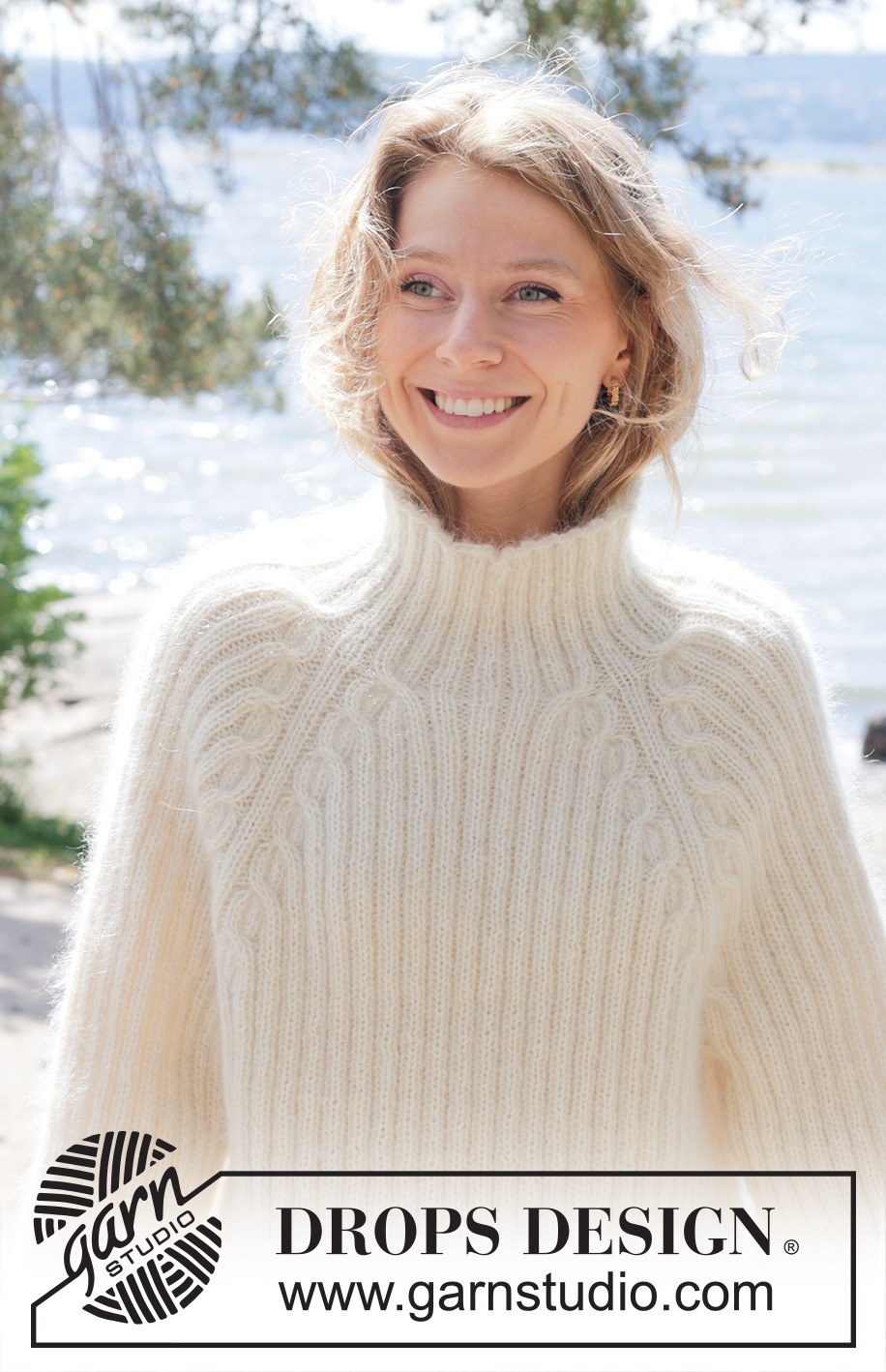




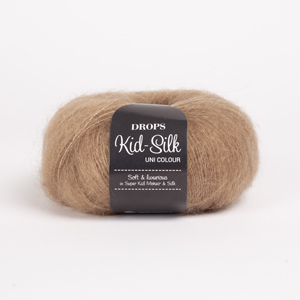
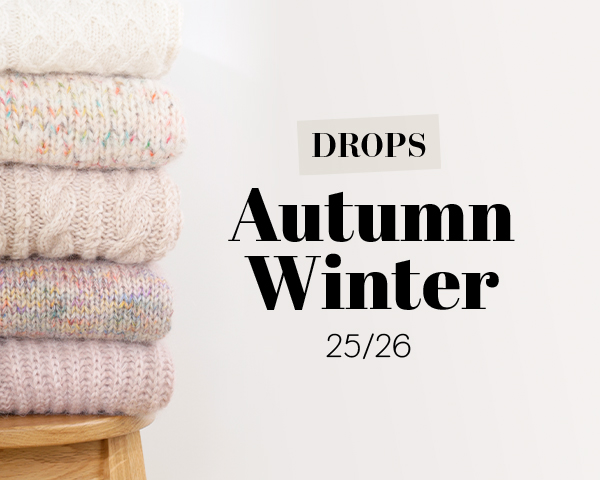

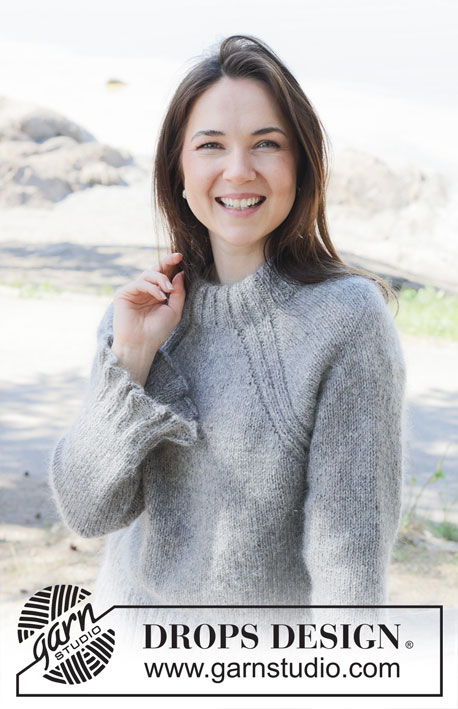
















































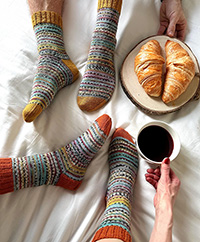
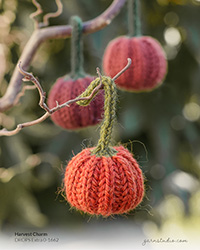




Post a comment to pattern DROPS 254-7
We would love to hear what you have to say about this pattern!
If you want to leave a question, please make sure you select the correct category in the form below, to speed up the answering process. Required fields are marked *.